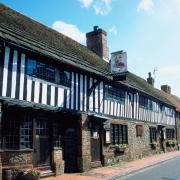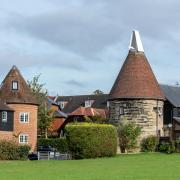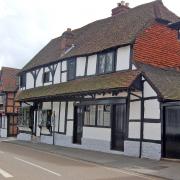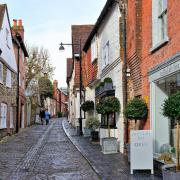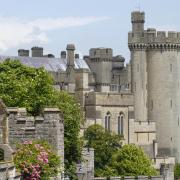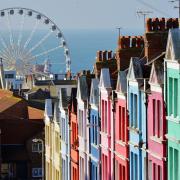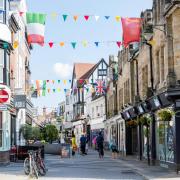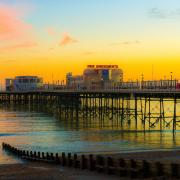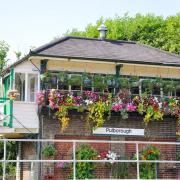An exhibition planned for next year about The Jam will celebrate mod culture and Brighton’s central role | Words: Jeremy Blackmore

“Nothing seems right, apart from Brighton,” says Phil Daniels’ character, a young mod named Jimmy, in the iconic film Quadrophenia.
It’s said at a moment of despair but serves to underline the importance of Brighton as a meeting point for mods, a place to find community with like-minded young people.
In truth, mod was about far more than the skirmishes with rival rockers at seaside resorts depicted in the film – indeed some believe contemporary newspapers often exaggerated the extent of any violence.
Instead mod was about a common outlook, embracing change and modern philosophy in all its forms and throwing off the shackles of a pre-war way of thinking.

Commentators believe the movement grew out of the late-1950s beatnik coffee bar culture in London, attuned to modern jazz and frequented by students.
By the early 1960s, its soundtrack had been replaced by R&B music. It attracted working-class teenagers with money to spend who adopted a smart dress sense and rode scooters, which they used to congregate in Brighton and other seaside towns.
The flourishing 1960s music scene, which itself did so much to cast off old norms, provided new heroes with bands like The Who and Small Faces becoming mod icons and Carnaby Street setting the latest fashions.
In 1973, The Who released landmark album Quadrophenia, into which songwriter Pete Townshend distilled everything it meant to be a mod.

With its cover depicting a mod on a scooter wearing a distinctive army surplus parka, the album was to have a major influence on what followed.
By the time the film adaptation of Quadrophenia was released in 1979, a mod revival was underway which had put the culture, music and fashion firmly back in the public consciousness.
The film dramatised the height of the 1960s mod movement, soundtracked by the music of The Who, but by then a whole new generation of bands were speaking for the youth of their times, addressing the issues of their day.
“This is the modern world”, sang Paul Weller on the title track of the second album from Woking band The Jam who had done much to spearhead this revival.

Infused with the energy of punk, yet with hooks reminiscent of Townshend, The Beatles and The Kinks, Weller’s songwriting reflected modern Britain.
His lyrics articulated his generation’s anxieties with astonishing maturity.
From rising unemployment to the ever-present threat of the Cold War, The Jam mixed message with melody to devastating effect. While Quadrophenia was in cinemas, they scored their first top ten hit, Eton Rifles, with its scathing take on class and privilege.
The Jam had been quick to visit Brighton, playing the Top Rank in July 1977 on their first headline tour, returning to the same venue a few months later and appearing at Brighton Dome the following year.

By late 1979, with Eton Rifles still riding high in the charts, the band released their fourth album, Setting Sons, complete with a back cover photo depicting a British bulldog (actually a boxer) next to a deckchair in Union Jack colours on Brighton beach.
That December, the band played their first date at the Brighton Centre. They would play the venue a further seven times over the next three years, culminating in their final ever gig in December 1982.
They may have played iconic London venues associated with the 1960s mod scene such as the Marquee Club and 100 Club, but Brighton was their spiritual home. Paul’s sister Nicky, who ran the band’s fan club, is currently planning a new exhibition in Brighton, themed around the band.
“The Jam were always down there,” she says. “So it’s a nice place to do a new exhibition. It’s amazing that we’re going to Brighton with it because the last Jam gig was at the Brighton Centre, so it’s quite apt.”

Gina Guarnieri now lives on the south coast near Worthing but growing up in London, her introduction to the scene was a 1979 television documentary about the making of Quadrophenia.
“It was a revelation,” she recalls. “I love anything Sixties, that’s my era, that’s the look and the sound that I love. So that really sparked my interest.”
Inspired by the film, Gina bought a Vespa scooter with money from her mother for her 18th birthday.
Gina, who sang backing vocals in R&B band Fast Eddie in the early 1980s, saw The Jam seven times. One album stood out above all: “I loved all the Jam albums, but when Sound Affects came out [in 1980], it just felt like my life being told through his songs. I remember every single word of every single song on Sound Affects. It’s the soundtrack of my life.

“It was just all-encompassing, and everything was about the next thing that he did and the next gig that you were going to. They were phenomenal times.”
Fellow fan Carl Grisley, who also now lives in Worthing, grew up in South Wales. He recalls hearing The Jam’s records playing in local youth clubs.
Their energy and style were a similar revelation. It’s one he says, that has guided him on a lifetime path.
Nicky says fans like Gina and Carl were central to the band’s success. At a time when megastar American artists toured the world in private jets, the Wellers prided themselves on a more grassroots approach.

Father John managed the band, while Nicky ran the fan club from the family home in Stanley Road once sackloads of mail started arriving. She recalls fans turning up on the doorstep and mum Ann making them cups of tea and bacon sandwiches.
The band were famously accessible to their fans with Nicky ensuring they signed everything that was sent their way.
Meanwhile throughout this period, mods made the annual pilgrimage by scooter to Brighton, to watch bands like Secret Affair and go dancing at venues such as the Drill Hall.
Perhaps embracing the mod philosophy and seeking to adopt a new approach – but also wanting to develop his music – Paul Weller split up The Jam at the height of their fame in late 1982.

If Brighton was a fitting place to finish a remarkable six-year run, the atmosphere that night was less than celebratory. In contrast to the “fantastic” show at Wembley Arena the week before, Gina recalls an unhappy atmosphere both on stage and in the crowd.
The band, though, left behind some unforgettable memories and a string of hit singles which spoke for a generation.
With many younger people among the visitors to previous exhibitions of the band’s memorabilia, it’s clear they left a lasting legacy. Many 21st century bands who have recorded at Paul’s studio were themselves influenced by The Jam.
These days, there may not be quite the same buzz about the mod scene in Brighton, but on August Bank Holidays, the long-running annual Brighton Mod Weekender brings the sights and sounds back to the city with live music and hundreds of scooters.

Due to the pandemic, indoor events including the Mod Weekender have been postponed until 2021. Organisers are working on alternative plans for this year’s event.
Reliving the memories
The biggest ever collection of The Jam memorabilia, About The Young Idea, launched in its spiritual home of Brighton on 31 July 2021 (postponed from this year due to the coronavirus pandemic) and will run until 30 August.
This huge collection of rare, mainly unseen material and fan memorabilia will be accompanied by acoustic performances from bands from the mod revival era, film screenings and guided talks.
In a pop-up location on Brighton beach with a bar and a selection of street and locally sourced food, the event will create a month-long place of homage.
All three members of the band – Paul Weller, Rick Buckler, Bruce Foxton – the Weller family and music archivist Den Davis are sharing items from their extensive personal archives and fans are invited to share their memories and memorablilia – contact exhibit@abouttheyoungidea.co.uk
For more information and tickets visit: agmp.seetickets.com/tour/-about-the-young-idea-the-jam-exhibition








